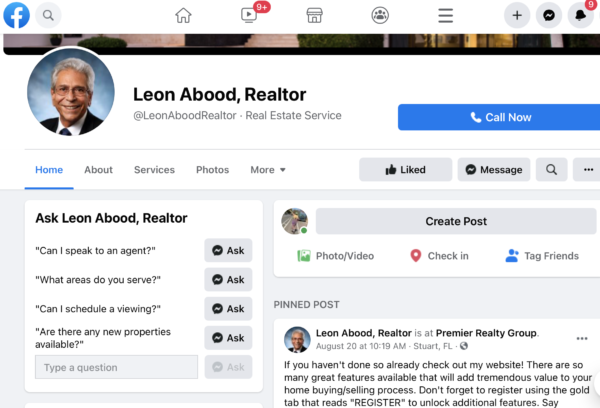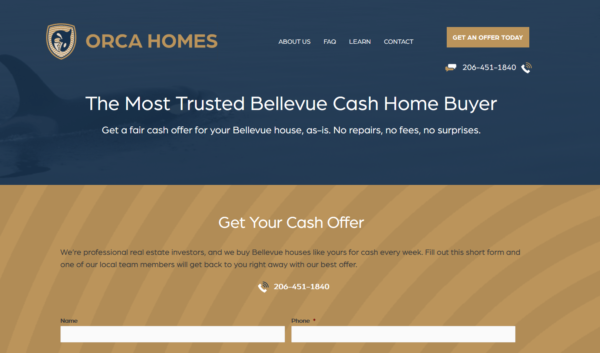
When I worked as a real estate agent, the hardest part of the job wasn’t showing clients their future dream houses or even negotiating with fellow agents. It was landing those listings — and that’s where a real estate sales funnel can make all the difference.
Attracting and nailing down qualified leads isn’t easy in any industry, but it’s especially challenging when you’re competing with hundreds of other real estate agents and brokers in your region. Having a working sales funnel can put you ahead of the game in a way that, once it’s set up, can almost run itself.
A sales funnel is a framework that creates an online system that helps you build client relationships in an authentic and, importantly, automated way. Instead of going in strong with the ask right off the bat, this process positions you as the expert you are. That way, clients will come to you.
For real estate agents who don’t have a tech team in their office, the idea of technical projects can feel overwhelming. In reality, it’s not that hard. Simply follow the steps of the framework and watch it work on your behalf. In some ways, you can think of your real estate sales funnel as a partner that develops lukewarm interest into hot leads.
Ready to create your sales funnel? It’s as simple as four simple steps. But first, let’s lay down some groundwork, so the concept is clear.

We make it easy for you to have a growing and connected client base with all the marketing tools you need, synced to the tools you’re already using.
Why should you consider a sales funnel?
Today, the magic happens online. AdWeek reported that a whopping 81% of shoppers conduct online research before making a purchase, and the percentage is even larger for young families looking for their first home purchase.
Have you ever heard about the “Rule of Seven”? This is the marketing principle stating that a potential client must connect with you (or your brand) at least seven times before they are willing to make a purchase. For real estate agents, this means they won’t want you to list their home or help them with a transaction until they’ve seen you that many times.
Billboards with your face and name are expensive. Sales funnels, meanwhile, use technology to foster those leads.
4 steps for building a real estate sales funnel
Sales funnels are set up through your real estate website, and they typically consist of four stages.
Step 1: Awareness
You need to get in front of prospective clients before creating the relationship you want with them. This involves casting a wide net as you work to separate out the uninterested from promising leads. You need to bring attention to your brand, but in this case, you’re not asking them to call you. You’re asking them to get to know you.

This step could include paying for sponsored posts on social media, hosting free webinars, or writing guest blogs. You could publish e-books highlighting your expertise or share important insights about the market. Basically, you need to create informative and engaging content that interests your prospects. Yes, you are giving this away for free — but you’ll be gaining their email addresses in return.
Step 2: Interest and evaluation
You’ve piqued their interest, but they’re still not ready to sign a contract with you. The second stage of the typical real estate sales funnel is to simply build a relationship. This can help you determine whether they are indeed in your target audience.
The way to do this is to present a clear and consistent message through various channels to demonstrate your brand. Now that they’re on your email list, you can send them more blog posts, offers for free meetings, and additional content (also known as lead magnets) to keep them engaged. Position yourself as an industry expert, and consider creating personalized, retargeted ads.
Step 3: Desire
They like what you have to say, but your prospects still aren’t ready to give you the listing. This is where the funnel starts to narrow. Here’s where you can demonstrate the quality of your work by showing them testimonials from your many satisfied clients or offering a free consultation.
Measure your returns and share your success. If you’ve taken steps to show clients your appreciation, it should be easy to demonstrate what it’s like to be one of your satisfied buyers or sellers.
Step 4: Action
Now, it’s finally time to go in for the ask. Using an automated email campaign, give them something that only you can offer. Perhaps this is inside information about a particular neighborhood or a free offer for a professional home staging. Make it the beginning of a beautiful professional partnership.
What’s needed to build your real estate sales funnel
Real estate sales funnels involve some heavy lifting at first but can make things easier for you in the long run. Start by polishing your online presence. This means having a well-designed, mobile-responsive website and search engine optimization. Make sure your social media platforms are active and on-brand. Start an email newsletter for your real estate campaign, and consider budgeting for additional advertising.
Then, get busy creating exciting real estate content that fits into the stages explained above. Brainstorm ideas that can help you stand out. Create a landing page that is specifically designed for implementing your sales funnel rather than selling properties. This page will be separate from the homepage of your website and present a single, simple call to action, moving viewers further along your sales funnel.

Once you’ve got users on your site, reach out again on Facebook and Google with retargeted ads for real estate and create a segmented email marketing automation. By reaching clients where they are, you can build your brand so that eventually, clients will begin to seek you out instead of the other way around.
Here’s how to get started today
It’s important to have your current comprehensive marketing strategy looking good before you encourage prospective clients to learn more about your work. For some clients, you’ll just have one chance to make a good impression. Check that you’re not missing the basics by reviewing Constant Contact’s The Download, a free guide on digital marketing for real estate agents or take a look at our Guide in Email Marketing for Real Estate Agents.
Now that you know how to create a real estate sales funnel, you’re ready to begin. Keeping the four stages in mind, create an implementation timeline so that you can begin to create the content and the partnerships you need to get the funnel operational. Break down the project into smaller tasks so you can stay focused on your end goal: more clients.
Also, don’t forget about your past clients. You never know when someone is ready to look for a new property, whether it’s residential or commercial. Keep cultivating those relationships by diverting them back into your real estate sales funnel. If they aren’t ready to rehire you, they may very well have a friend or a family member who is.




